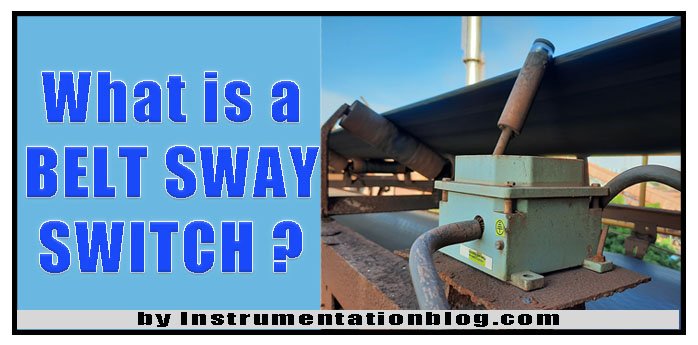Nowadays belt conveyor systems are very popular to transport bulk material from one place to another with safely and reliably. They are mainly used for transportation, feeding, and discharging of bulk solid material.
The capacity of a belt conveyor depends on the speed, shape, and width of the belt, methods of feeding, and solid properties. Belt conveyors are the most common form of material handling system used in the manufacturing and mining industries, thermal plants, and construction projects.
Well, today’s blog is not about the belt conveyor system but it is about the safety switch especially the belt sway switch installed in it.
So let’s not waste more time and let’s start it.
Table of Contents
What is Belt Sway Switch?
There are several switches installed on the conveyor system to prevent an injury or belt damage. Belt Sway Switch is one of them which detects the deviation in the running belt and gives the user an alarm and stops the conveyor belt.
Working Principle of Belt Sway Switch
The Belt sway switch has generally two operating points ⇒ One for the Alarm and The other for the Tripping.
There may be a chance that the conveyor belt touches the roller while running and it pushes the roller lever. When the lever tilts and reaches at 20 °C, it is the point at which it gives an alarm signal to the user. When the lever angle reaches above 35 °C, it gives an emergency stop signal to the belt conveyor and remains in this condition until the belt starts running in the proper position.
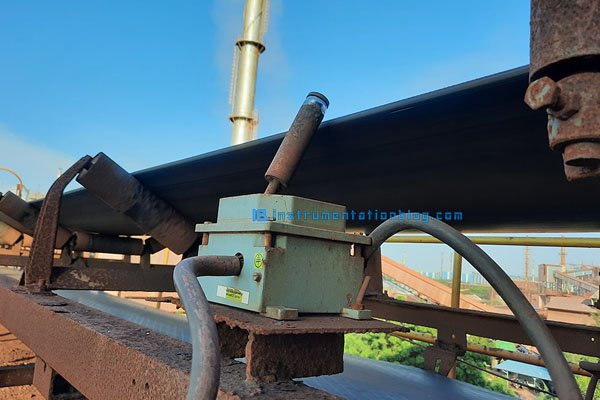
The belt sway switches detect any deviation or displacement in the running belt and thus prevents it from further damage. The belt sway switch is made of high-reliability microswitches, ball-bearing, and a roller lever which is tilted at 75 °C.
Construction of Belt Sway Switch
Touch Roller ⇒ When a deviation occurs in the running belt in touch the roller and pushes it. When the roller tilts above 35 °C, it gives an emergency stop signal to the belt conveyor and remains in this condition until the belt starts running in the proper position.
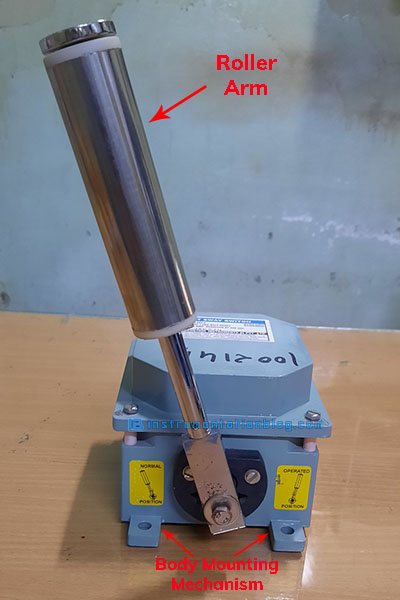
Name Plate ⇒ Nameplate contains details like type, contacts, rating, serial number, etc.
Mounting Mechanism ⇒ User can mount the switch using mounting bolts on the side of the conveyor.
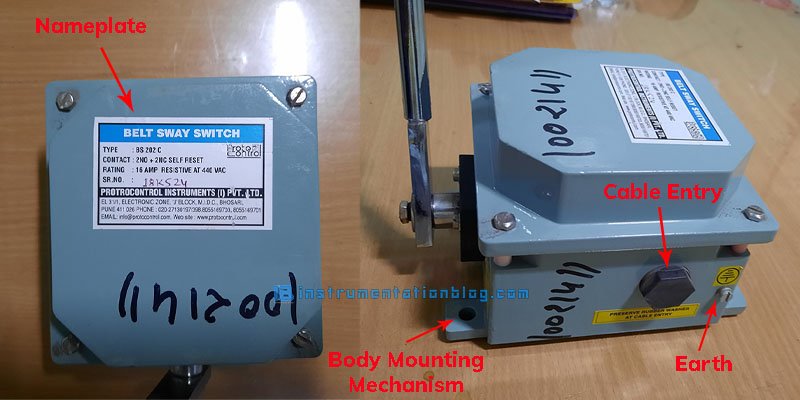
Cable Entry ⇒ Maintenance personnel can enter the cable from the cable entry gland which is sealed with a rubber enclosure.
Electrical Terminals ⇒ Maintenance personnel can use the normally open or normally close contacts depends on the logic used by the designer.
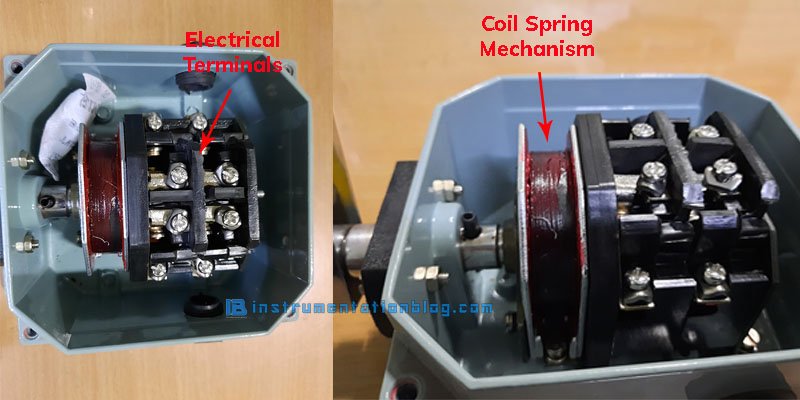
Coil Spring ⇒ Coil spring mechanism detects the distortion in the touch roller.
Operation of Belt Sway Switch
Belt sway switches are installed on both sides of the conveyor with proper adjustment of the roller-lever angle. They are mounted as a way that it will be easy for the maintenance person while working in an emergency condition.
The quantity of the switches should be considered according to the length of the conveyor belt.
Connection
Users can connect all the pull cord switches in parallel as well as series depends on the application and design and program the PLC. The below you can find the connection in parallel as well as series.
Belt Sway switches connected in parallel ⇒
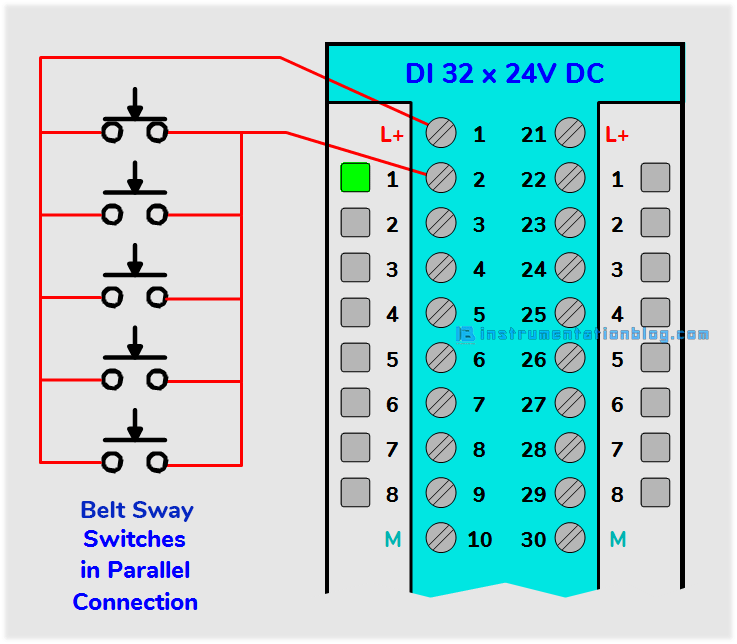
PLC logic for parallel belt sway switches ⇒
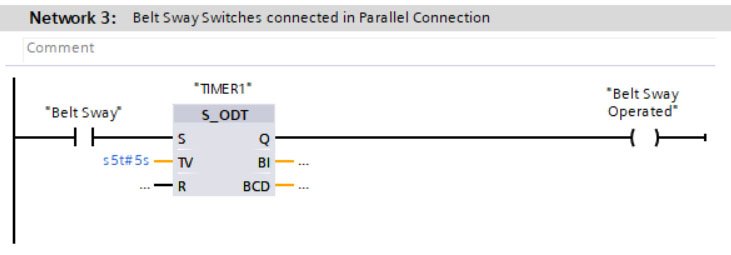
Belt Sway switches connected in series ⇒
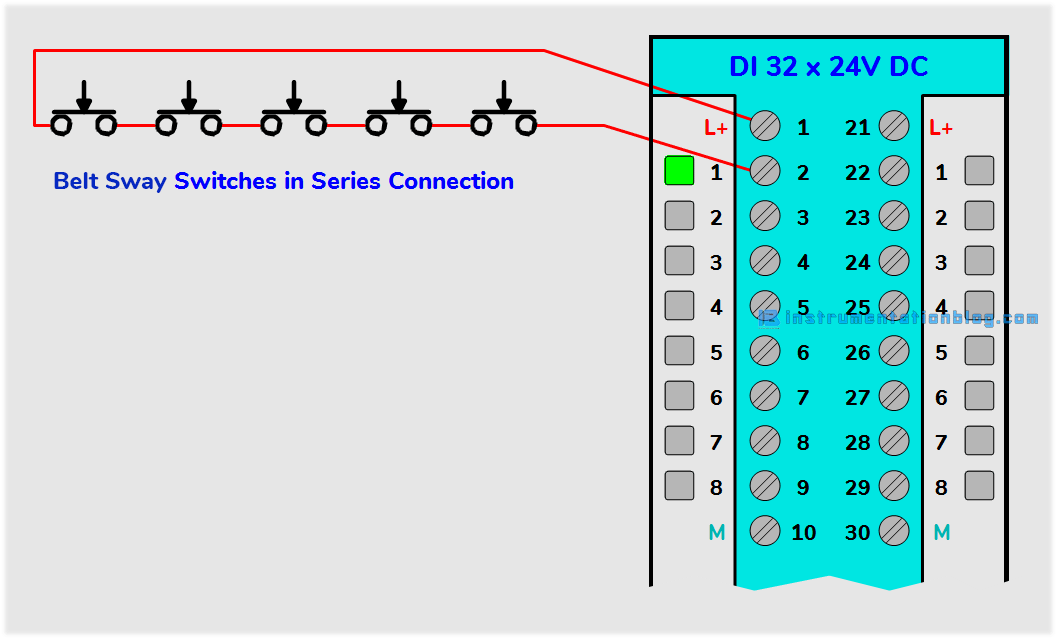
PLC logic for series belt sway switches ⇒

Application
Widely used in the industries which used large conveying systems like the Steel industry, Cement industry, coal industry.
Now I hope you have a complete idea about the belt sway switch. If you want any further questions then please feel free to comment down below. Each comment matters for us and gives us the motivation to share more ideas with you. Thanks and have a nice day!
Must Read Articles about PLC
- What is PLC? How its work?
- Sinking vs Sourcing in PLC
- Bit Logic Instructions
- PLC Timer and PLC Counter
- Closed-loop vs Open-loop
- PLC Programming Blocks
You can also find the books to boost your knowledge in Instrumentation and PLC by clicking the below link ⇒
Instrumentation and Control related books, PLC related books, SCADA related books
